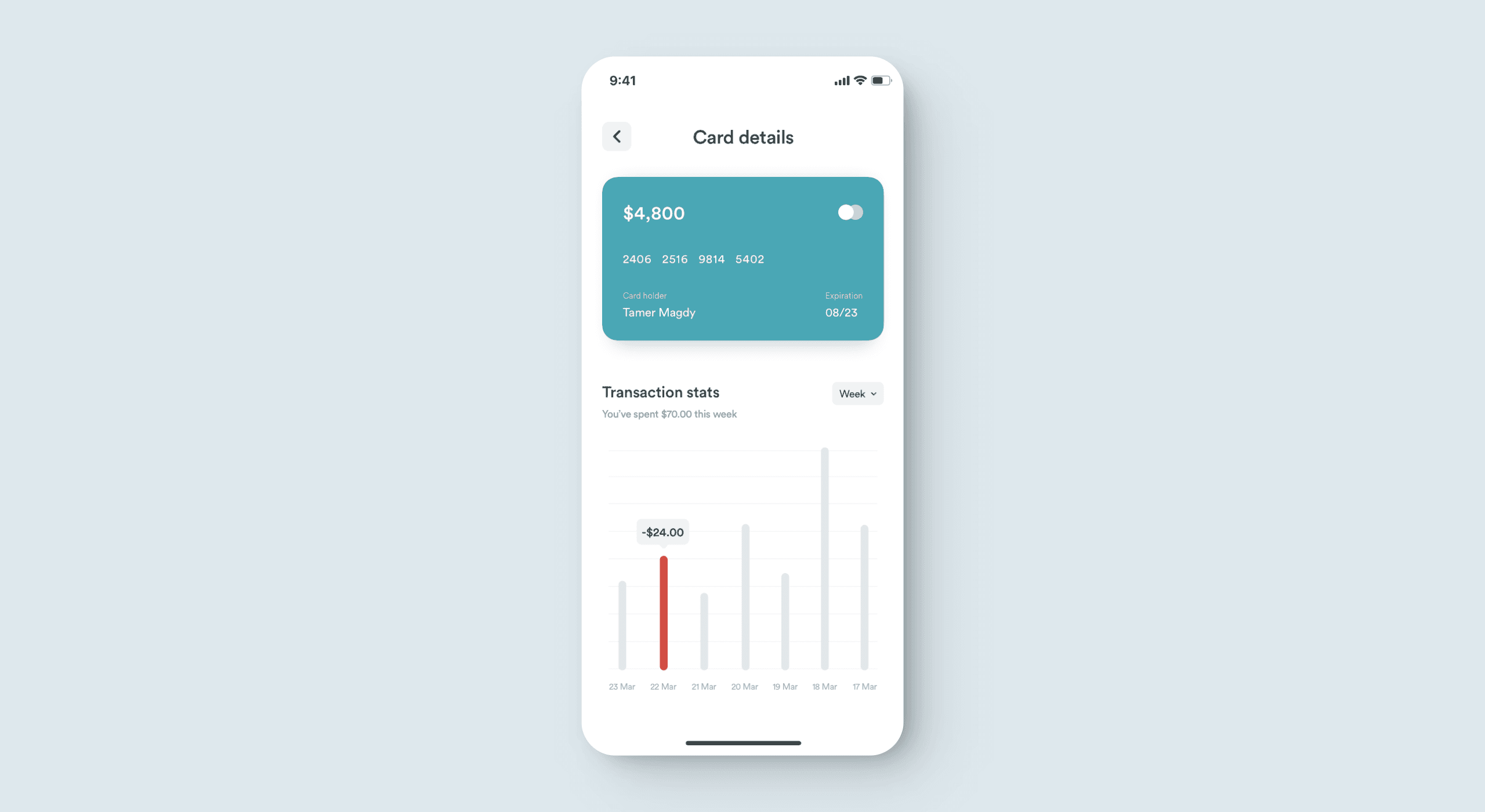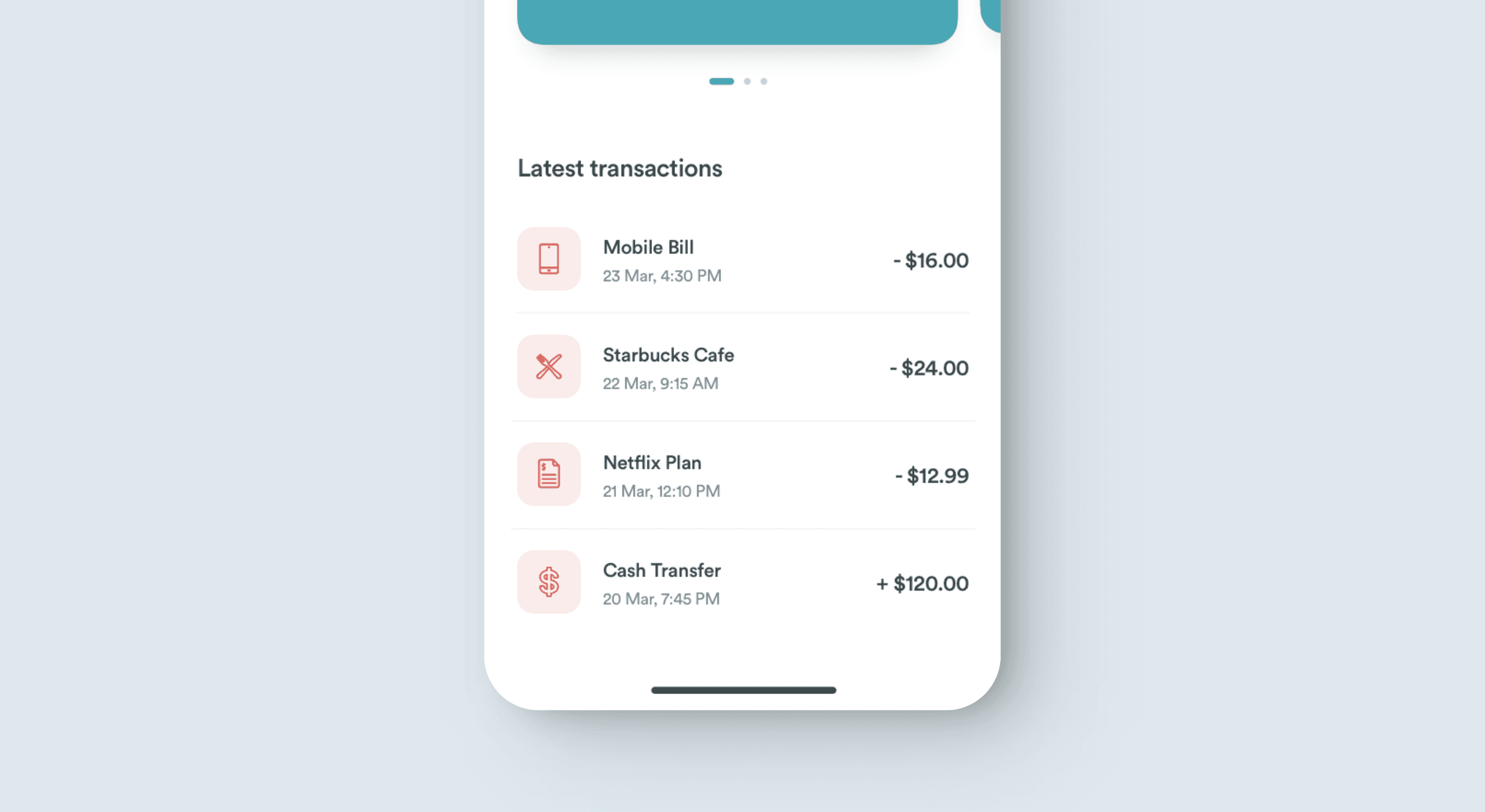Personal Finance
An app that is a powerful tool designed to help users manage their financial responsibilities effectively. The app offers a range of features, including credit card tracking, transaction management, subscription and bill management, expense control, and budgeting tools.
Role:
Digital Designer
Duration:
2020
Tools:
Klarna
What is TripNest all about?
The challenge for the personal finance mobile application was to provide users with a comprehensive solution for tracking their credit cards, managing their transactions, subscriptions, bills, and controlling their expenses. With numerous financial responsibilities, users needed a centralized platform that could help them easily manage their finances, avoid unnecessary expenses, and achieve their financial goals. The challenge was to create a user-friendly, intuitive, and feature-rich mobile application that could meet these diverse financial needs and provide users with a seamless experience.
Simplified travel planning
Curated reliable information
Collaboration & design personalized itineraries
Itineraries created with AI assistance
55%
of the target audience do their
research and planning online.
64%
of these users find it
frustrating to plan a trip
citing issues like:
over
Difficulty coordinating with others
Trust issues with travel resources
Challenges in budget management to keep trips affordable
Time-consuming research on destinations
Struggling to balance sightseeing without overloading the schedule
Overwhelmed by recommendations from too many sources
Ensuring eververone enjoys the activities
Why TripNest Matters
Process
We've adopted a user-centric approach, iterative design, and rigorous testing, ensuring that the app met the target audience's needs and preferences effectively.
Research and analysis: The first stage involved researching and analyzing the target audience's financial needs, preferences, and pain points. The team conducted surveys, interviews, and market research to gain insights into user behavior and preferences.
Wireframing and prototyping: Based on the research insights, the team created wireframes and prototypes to visualize the app's features and functionality. The team iterated on the designs based on user feedback, optimizing the user interface and user experience.
User testing and feedback: The team conducted user testing sessions to validate the app's usability, functionality, and design. User feedback was incorporated into the design process to improve the app's effectiveness and user experience.
Development and testing: Once the design was finalized, the app was developed using agile development methodologies. The app was tested rigorously to ensure that it met the highest standards of quality, functionality, and usability.
Launch and feedback: The app was launched in the market, and user feedback was gathered to improve the app's performance further. Feedback was used to refine the app's features and functionality, optimizing the user experience and driving growth.
Solution
The app's user-friendly interface and intuitive design make it easy for users to track their financial activities in real-time, view their transaction history, and receive alerts for upcoming bills and payments. Users can also set budget goals and receive personalized financial advice based on their spending patterns, helping them stay on track and achieve their financial objectives.
Moreover, the app's advanced security features, including two-factor authentication, biometric login, and data encryption, ensure that users' financial data is secure and protected. The app also integrates with popular financial institutions, allowing users to view their account balances, transaction history, and credit scores in one place.
We've adopted a user-centric approach, iterative design, and rigorous testing, ensuring that the app met the target audience's needs and preferences effectively.
Research and analysis: The first stage involved researching and analyzing the target audience's financial needs, preferences, and pain points. The team conducted surveys, interviews, and market research to gain insights into user behavior and preferences.
Wireframing and prototyping: Based on the research insights, the team created wireframes and prototypes to visualize the app's features and functionality. The team iterated on the designs based on user feedback, optimizing the user interface and user experience.
User testing and feedback: The team conducted user testing sessions to validate the app's usability, functionality, and design. User feedback was incorporated into the design process to improve the app's effectiveness and user experience.
Development and testing: Once the design was finalized, the app was developed using agile development methodologies. The app was tested rigorously to ensure that it met the highest standards of quality, functionality, and usability.
Launch and feedback: The app was launched in the market, and user feedback was gathered to improve the app's performance further. Feedback was used to refine the app's features and functionality, optimizing the user experience and driving growth.
Key takeaways
The app's success was due in part to its user-centric design process. The team conducted extensive research and user testing to ensure that the app met users' needs and preferences, resulting in a highly effective and user-friendly platform.
The app's range of features, including credit card tracking, transaction management, subscription and bill management, expense control, and budgeting tools, provided users with a comprehensive financial management solution. This helped users to better control their spending, reduce unnecessary expenses, and achieve their financial goals.


